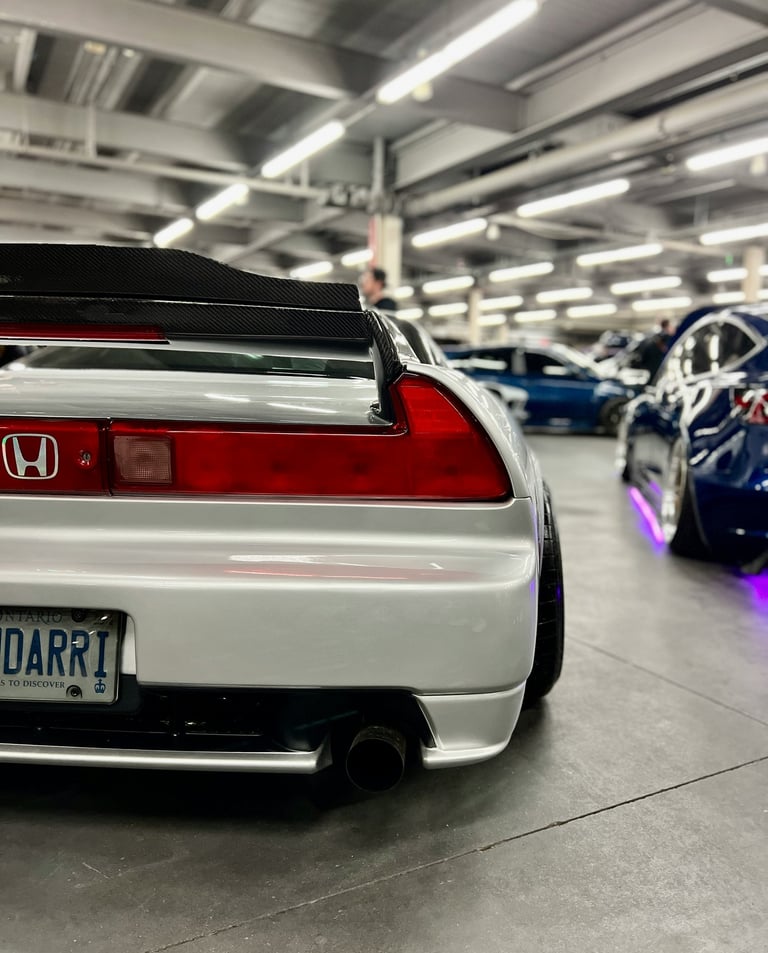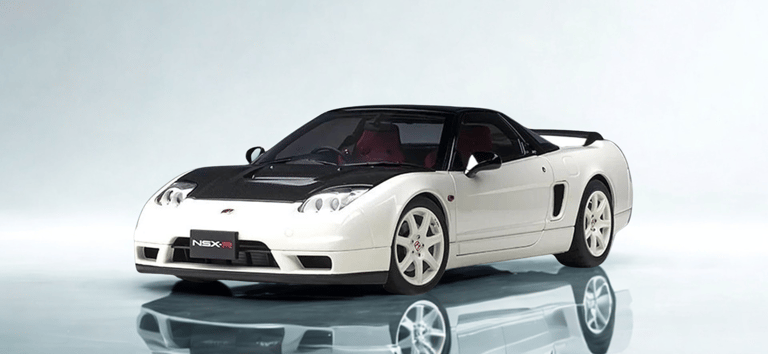Honda NSX-R Miniature 1:18: The Japanese Supercar That Challenged the Giants
The supercar world, dominated by Ferrari, Lamborghini, and Porsche, was taken aback in the early 1990s when Honda introduced the NSX. A Japanese sports car that delivered high-level performance, reliability, and refined handling. But the brand wanted to go further. Thus was born the NSX-R (or Type R), an even more radical and lightweight version, designed for driving purists. Considered by many to be Honda's masterpiece, the NSX-R remains a benchmark for balance, responsiveness, and driving pleasure.
CARS & CLASSIC
Driven Vault
9/4/20253 min read


History and Origin
The original Honda NSX was launched in 1990, the result of an ambitious project led by Ayrton Senna, who helped develop the suspension. It introduced unprecedented technologies for the time, such as an aluminum body and a mid-mounted V6 engine.
In 1992, Honda introduced the NSX-R, the street-legal track version. The goal was clear: reduce weight, increase precision, and transform the NSX into a machine for enthusiasts.
Only 483 units of the first-generation NSX-R (1992–1995) were produced, all for the Japanese market. An absolute rarity, it became a collector's item.
Exclusivity and Cultural Impact
The NSX-R became a true legend among enthusiasts. Its limited production and focus on purism made it highly coveted. It was a car dedicated to the Japanese market, which increased its aura of exclusivity in the West.
Its fame grew in video games like Gran Turismo and Forza Motorsport, where it became an icon of "JDM legends." It established Honda as a manufacturer of respected supercars, directly rivaling the Ferrari 348 and Porsche 911 of the time.
For collectors, finding an original NSX-R today is a challenge—and auction prices easily exceed US$300,000.
Evolution: NSX-R (2002)
In 2002, Honda revived the legend with a new version of the NSX-R, based on the second-generation NSX. 3.2L naturally aspirated V6 engine (C32B) with 290 hp. Even lighter and with refined aerodynamics. Produced in even smaller numbers, it was also targeted at the Japanese market.
This version reinforced the myth while maintaining the philosophy of maximum purity behind the wheel.
Rare Curiosities
Ayrton Senna: The three-time world champion helped tune the suspension of the original NSX, which served as the basis for the NSX-R.
Artisanal Production: The car was hand-assembled in Tochigi, Japan, with obsessive attention to detail.
No Luxury: The NSX-R had no air conditioning, radio, or sound insulation as standard—all to save weight.
JDM Masterpiece: Only 483 units of the first generation were made, making it one of the rarest JDM cars of all time.
Soaring Price: Some NSX-Rs have sold for over US$500,000 at international auctions.
Design and Engineering
Visually, the NSX-R closely resembles the standard NSX, but hides crucial differences to optimize its performance.
Design highlights:
Lightweight aluminum body, unique in the segment.
Subtle spoiler, improving high-speed stability.
Simplified interior: Recaro sports seats, Momo steering wheel, and almost no luxury features.
Weight reduced by 120 kg, thanks to the removal of features such as air conditioning, sound system, and sound insulation.
Honda's philosophy was clear: less comfort, more performance.
Technical Specifications
Although not the most powerful car of its time, the NSX-R impressed with its combination of lightness, balance, and immediate response.
Engine: 3.0-liter naturally aspirated V6 (C30A)
Power: 280 hp at 7,300 rpm
Torque: 294 Nm at 5,400 rpm
Weight: ~1,230 kg (compared to 1,350 kg for the standard NSX)
Transmission: 5-speed manual
0–100 km/h (0–62 mph): ~5.0 seconds
Top speed: ~270 km/h (170 mph)
Price at the time: approximately ¥8.5 million (approx. US$70,000 in 1992)
These figures demonstrate why the NSX-R became legendary: not for its brute force, but for its surgical precision on the track.


The Honda NSX-R is one of the most iconic supercars in Japanese history. It wasn't built to be the fastest in a straight line, but rather the most balanced, precise, and engaging for the driver.
With limited production, reduced weight and the philosophy of “less is more”, the NSX-R has become a rare JDM classic and desired by collectors and enthusiasts worldwide.


